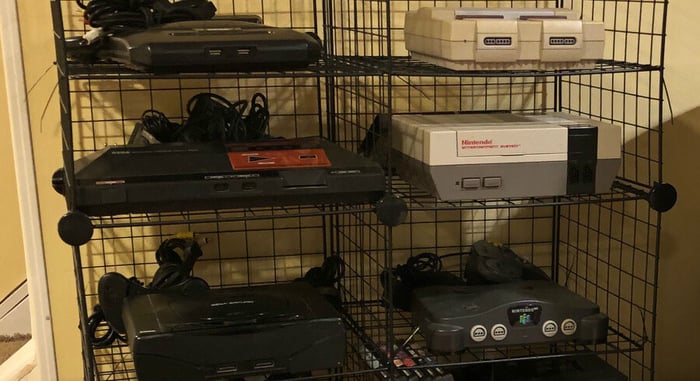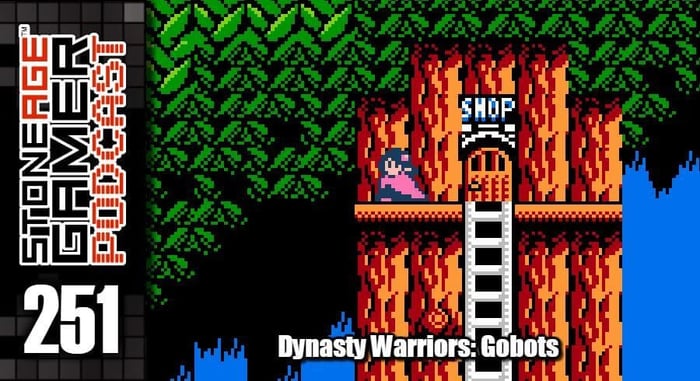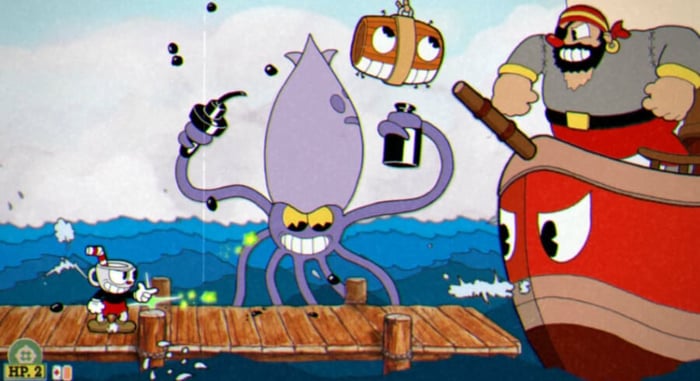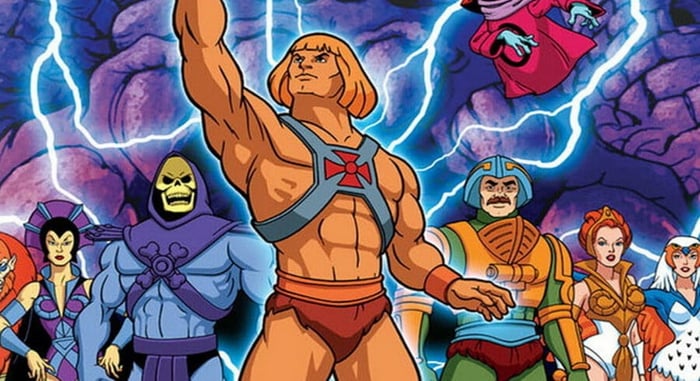
Creating a Game Room: Part 11 - Reclamation at Last
As expected, it’s been quite some time since my last entry. If memory serves, I wasn’t sure when I’d have an opportunity to advance my game room plans. Well, one finally presented itself, and I gotta say, I’m pretty happy about it.
A month or so ago, my son told me he wanted to play every Mario Kart game. It finally dawned on him that the name Mario Kart 8 meant there were 7 other Mario Kart games to try, and his curiosity was officially piqued. I was happy to oblige. I dove into my storage space and pulled out all the Mario Kart games (minus the arcade ones, of course), the systems to play them on, and got them all set up for him to enjoy. As we took this tour, it once again filled my heart with sadness that I didn’t just have these things out for easy enjoyment instead of having to go spelunking in this weird crawl space to find the games I want, and I once again tried to come up with a solution that didn’t involve putting my stuff at risk of destruction by toddler. It was again to no avail. Try as I might, I couldn’t think of a way to set up my games safely.
John’s favorite was Mario Kart: Double Dash, because he’s a man of taste, and when he asked me a week later to play Double Dash again, I gladly dove back into storage to get it out. This time I left the GameCube hooked up and hid it in a compartment in the TV stand. More weeks passed, and John kept asking for Double Dash, so I grabbed a small stack of some of my favorite GameCube games and basically left it there for occasional GameCube goodness. He’d also expressed interest in Super Mario Sunshine and F-Zero GX in the past, so having them on hand for him to mess around with seemed like a good idea.
It was then that an idea struck my brain. Next to my CRT, I have a set of wire cube shelves. Their intended purpose was to fill them with consoles that would connect to the CRT, but shortly after I bought them, they became filled with toys. I had seen my daughter have her fun with the BluRay player in the living room, so it seemed like a terrible idea to keep something like a PS2 or an Xbox anywhere near where she could reach them. But after spending some time with the GameCube while she was around, it seems that to an extent, she’s gotten not so bad at following instructions as far as leaving certain things alone. And there it was. I’ve been looking at this all wrong. I keep trying to come up with ways to display my games, but I should be thinking of how to display some consoles!
I made the decision that I was going to evict the toys from these wire shelves and get some classic consoles up and running. The question now was, how? The trouble with the cube shelves is that they’re, well, cubes. Most systems are flat rectangles, meaning that there was going to be an awful lot of unused space. I tried thinking of the best ways to combat this issue and make each cube into two rectangles. I landed on the marvel of zip ties.
These cube shelves are made out of a set of identical wire racks with brackets holding them together at the corners. So I figured if I just bought another set, I could just take those pieces, place them where I wanted, and use zip ties to fasten them in place since the brackets that come with them only work on corners. With this plan in mind, I decided to order another set of 6 cubes. This afforded me the opportunity to add 2 more cubes to the top of the unit for even more system storage. Once I added the dividing shelves, that would give me 16 slots for consoles to inhabit. I still decided to only do the top 4 cubes and leave the bottom 4 for toys because, well, the kids do need space for their toys, and having consoles that close to the floor I think is still a bad idea, even if my kids are more or less good around them. At some point they’re going to start having friends over, or a birthday party is going to happen, and those things will be in jeopardy.
So the next question was, which systems should I set up? I’d love to have my AV upgraded Atari 7800 up there for some classic Atari gaming whenever I want, and my TG-16 could always use more love, but for now, keeping it simple seemed like the best idea. One row of Sega and one row of Nintendo would do nicely. NES/MasterSystem, SNES/Genesis, Nintendo 64/Saturn, and GameCube/Dreamcast.
Now that I had the basics of my plan in place, it was time to start assembling. The first problem I ran into was with bowing. I didn’t take into account that the brackets that keep the shelves in place add to the overall shelf measurements, so when I was tightening the zip ties to the shelves, the sides of the unit started to bow a little. It’s not terrible, but it bothers me enough to want to cut them down and start again. The other problem I ran into was that of equality. Using this method to create extra shelves meant that one was always going to be taller than the other. Normally this is the kind of thing that would bug the crap out of me, but I couldn’t think of a reasonable way to keep all the shelves even and have them remain tightly in place, so I learned to live with it. Each short shelf has a companion short shelf, so it really doesn’t look all that bad.
The final issue came when I realized that I had the room to put the consoles on their shelves (nothing wider than a MasterSystem, though. That’s pretty much the limit), but there wasn’t very much in the way of vertical space for changing discs and/or cartridges. It’s not impossible, but it could be easier. This became a serious motivating factor in me getting flash carts for all of my systems, which is an expense I’ll be trying to factor into my life as soon as I can.
The next step was figuring out how I was going to get these all connected to the TV. It’s got a couple of inputs, but not nearly enough to house all these units. System selectors were going to be needed. I haven’t bought a system selector in AGES, and the ones I still own have more or less run their course. But I did manage to find these little diddys on Amazon.
Unfortunately, when they finally showed up in the mail, I realized they didn’t come with basic AV wires to connect them to the TV, and wouldn’t you know it, I’m fresh out of those! Well, I might have some, but if I do, they’re buried under all the stuff I didn’t sell in my garage sale this past weekend. Unfortunately, progress was once again impeded.
So what’s left is for me to pick up 2 sets of standard AV cables, get a second gigantic surge protector to plug all these systems (and the eventual others) into, run all the cables, and test everything out. Oh, and I have to track down all my controller extension cables because man, I am spoiled by the wireless gaming of the past 10 years or so. I’m also going to futz with the order I’m placing them on the shelves and spend some time cleaning up my Dreamcast and SNES. They’ve both gone a bit discolored over the years and I want them to look nice and pretty now that they have somewhere to be.
I’m thrilled at the progress I’ve made, and while I’m still a couple years away from making my basement the game room I’ve always wanted, things are finally looking up.
The Game Room story so far:
Creating a Game Room: Part 10 - Paint it Black
Creating a Game Room: Part 9 - Inspiration From Above
Creating a Game Room: Part 8 - A Nice Place to Sit
Creating a Game Room: Part 7 - Two Steps Forward…
Creating a Game Room: Part 6 - Love (HDMI) Connection
Creating a Game Room: Part 5 - CRTs are Heavy
Creating a Game Room: Part 4 - Arcade Dreams
Creating a Game Room: Part 3 - Shelf-Satisfaction
Creating a Game Room: Part 2 - Organization is Key
Creating a Game Room: Part 1 - System Selector
NOTE: These older posts are missing their images. I’m working on getting that fixed as soon as I can!





